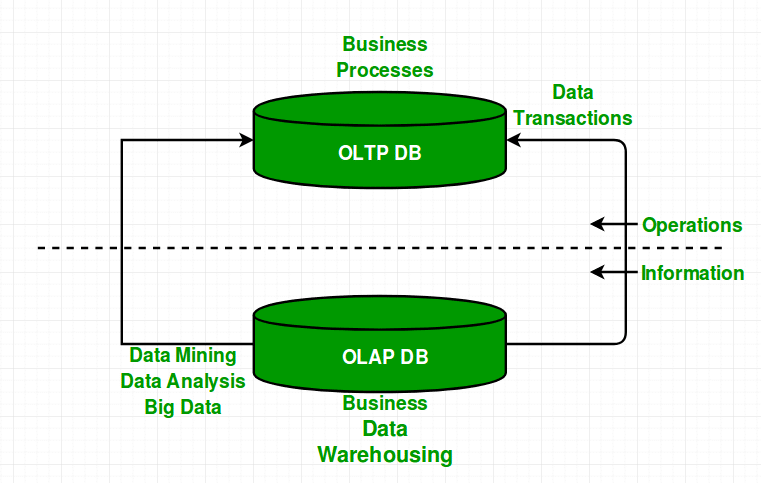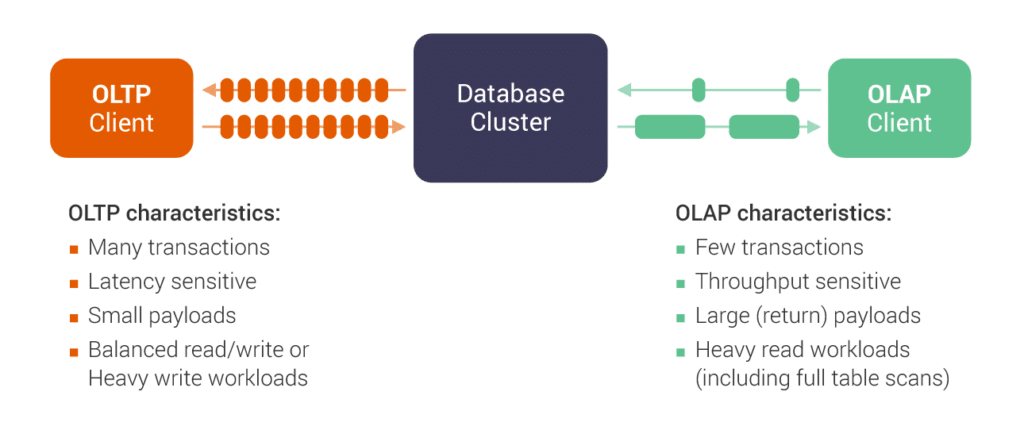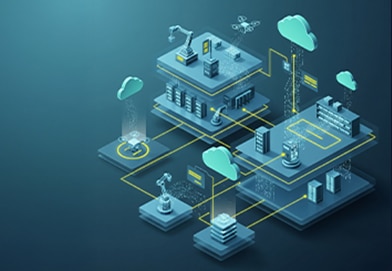Transferring data can be costly, particularly when it becomes routine in business operations. Moving rows between OLTP and OLAP systems is no exception, especially with high daily transaction data volumes. The quest to unify OLAP and OLTP engines continues. Is there a single best solution? Exploring technologies that address current data silo limitations can provide insights into this challenge. Is there one engine to rule them all?
If you’re looking to understand the difference between OLTP and OLAP and the goal of making new tools available, this is the guide for you. We’ll also chronicle the journey of a savvy business intelligence team looking for their perfect solution. Let’s start exploring how to address enterprise-level transactional databases and analytical needs.

What Is OLTP?
OLTP, or Online Transaction Processing, is a category of data processing that manage transaction-oriented applications, focusing on entry and retrieval processes. These systems are optimized for handling many short online transactions, such as insert, update, and delete operations, ensuring efficiency and speed.
Designed to maintain data integrity and consistency, OLTP systems utilize mechanisms like ACID (Atomicity, Consistency, Isolation, Durability) properties, even during system failures. They are commonly employed in applications such as online banking, order entry, retail sales, and customer relationship management, where real time processing and accuracy are paramount. OLTP systems are usually the source of the data, where transactions are born.
What Is OLAP?
OLAP, or Online Analytical Processing, is a category of data processing that empowers data analysts, managers, and executives to gain insights into information through fast, consistent, and interactive access. Designed for complex queries and analyses on large volumes of data, OLAP systems enable users to slice and dice historical data across multiple dimensions, offering various perspectives for a comprehensive understanding.
This multi-dimensional approach simplifies the identification of trends, patterns, and anomalies, making OLAP particularly valuable for tasks like financial reporting, budgeting, forecasting, and data mining. Quick access to aggregated data is essential for informed decision-making, and OLAP provides the tools necessary to achieve this efficiently.
Exploring OLAP vs OLTP Databases
The difference between OLAP and OLTP is important to understanding modern database technologies. Technologies merging OLTP and OLAP functions are known as HTAP (Hybrid Transactional and Analytical Processing). In summer of 2022, Snowflake announced Unistore, a new engine that integrates analytical and transactional data, breaking down traditional data silos by enabling a single database to store both types.
“It’s important to note that Snowflake unistore uses two different type of database engine, one for each. But because both engine runs on the same platform, there is no data movement.” says Franck, Data-Sleek CEO.
SingleStore offers another solution, supporting both OLTP and OLAP data processing on the same database platform and allowing real-time transactions and data analytics.
“Singlestore has been supporting HTAP engine for a while now. I recommend you read some of our blogs about it and our benchmarks” says Bala, Data-Sleek database specialist.
Challenges with MySQL for OLAP
While MySQL is indeed optimized for transactional operations (OLTP) and can handle high traffic, challenges arise when it comes to simultaneously managing transactions and executing complex queries on aggregated data.
Operations such as “select count, sum, min, max, and group by” can become resource-intensive, as MySQL is not inherently designed for reporting tasks, leading to significant computational demands. Although creating a replica can improve query efficiency, this approach may struggle under sustained heavy traffic, necessitating more costly aggregate queries.
MySQL for OLAP Infrastructure Costs and Downtime Risks
Adding multiple replicas and a load balancer is a logical step, though it increases infrastructure costs.
”We’ve recommended solutions to our customers to create replicas for their reporting needs. MySQL can only go so far when using aggregated queries against large datasets”, says Ovais, Analyst Engineer at Data-Sleek.
If the primary MySQL server fails, having a standby can mitigate downtime, but this adds further expense, and even with precautions, a failure can result in a 5 to 10-minute downtime.
Opting for AWS Aurora can alleviate some of these issues. Aurora’s parallel processing try to match Snowflake’s functionality, offering better caching than MySQL. However, its performance still falls short of SingleStore or OLAP database systems (Redshift, Snowflake, even Postgres), and it lacks the simple compute scaling capabilities that Snowflake provides.
Snowflake and SingleStore Advancements
Snowflake now supports primary and foreign keys, sparking speculation that e-commerce vendors like Shopify might move OLTP operations to Snowflake or SingleStore for real-time analytics without data transfers. SingleStore, which has supported both engines since 2019, offers a memory engine for fast ingestion and caching, while Snowflake recently introduced its Hybrid table, leading to the question: Is Snowflake late to the party?
SingleStore holds an edge with its support for the MySQL protocol, making it easier to transition existing apps from MySQL. In contrast, migrating data to Snowflake presents more challenges, potentially complicating the transition process. This HTAP engine has also added lots of features, especially towards AI, and it’s no surprise that SingleStore Partners With Snowflake to Help Users Build Faster, More Efficient Real-Time AI Applications
What’s the Difference Between OLAP and OLTP?
People often confuse these databases, but the difference between OLAP and OLTP is significant. Simply put, OLTP manages transactions, handling tasks like recording purchases, updating inventory, and managing customer accounts.
In contrast, OLAP supports decision-making by offering insights into customer behavior, such as purchase history and spending patterns, enabling companies to tailor their offerings and strategies. For reporting, tools like Pentaho, which can integrate with MySQL, might be worth considering.

Key Differences in Data Processing
The main difference between OLAP and OLTP technologies is how they process data. OLAP is designed for complex analysis, while OLTP is designed for transaction processing.
OLAP typically uses a multi-dimensional model, allowing quick analysis by slicing and dicing it differently. OLTP typically uses a tabular model that is better suited for centralized online transaction processing.

Enhanced performance and high availability are the key benefits of a dedicated OLTP-OLAP unique engine. Separating operations can improve performance, ensuring that the information required for OLAP processing is always available. You can also use a clustered file system or a load balancer to improve performance and high availability.
Unifying Engines Considerations
Database management vendors aim to unify these engines into a single platform, promising the performance and scalability of OLTP alongside the flexibility and power of OLAP. This integration seems ideal, offering the best of both worlds.
However, merging these engines may not be the optimal solution. OLAP and OLTP serve different purposes, such as transactional processing and analysis. Combining them can increase system complexity and data management overhead, potentially reducing performance and scalability. Despite these challenges, it might still be preferable to other workarounds.
So, is it worth trying to unify these engines? In many cases, the answer is no. There are good reasons some organizations might choose to maintain two separate engines, each suited to a particular purpose.
OLAP vs. OLTP: Key Features of These Unique Engines
OLAP & OLTP Unique Engine is an innovative approach to database design that combines the best of both systems in one operational and analytical system.
The OLAP-OLTP Unique Engine has the following features:
- Fast, reliable transaction processing
- Fast, efficient analysis of data
- Flexible data model that supports both operations
- Efficient use of disk space
- Scalability to accommodate large amounts of data
Data Replication and Partitioning
SAP HANA is another unique solution that offers an engine to handle both Online Transaction Processing and Online Analytical Processing workloads. SAP HANA can also handle data replication and partitioning. The unique engine is a key part of the system. It manages the system’s data and the interaction between these database systems.
The unique engine can also be described as a distributed system that runs on a cluster of servers. It is designed to be scalable and handle large amounts of data. The unique engine is also fault-tolerant, so it can handle failures of individual servers. In terms of implementation, it is designed as a set of Java servlets.
Historical Analysis
Historical analysis of cloud observability data focuses on examining operational data to enhance understanding of past performance and preemptively identify potential issues. The process begins by gathering information from various sources, including cloud providers, monitoring systems, and log files, followed by pre-processing to prepare it for analysis.
Unlike the difference between OLAP and OLTP, where OLTP handles real-time transactions, and OLAP focuses on analysis, this process involves analyzing information to uncover trends and patterns through time series and correlation analysis. The insights gained are then used to create reports, dashboards, and visualizations, aiding in understanding past performance and identifying issues before they escalate.
Improving Customer Experience
Companies can use this orchestration to analyze the performance of their cloud services to improve customer experience. The company could track how well its services respond to changes in load and usage and potentially identify any issues before they cause customer complaints. Additionally, the company could use the information to investigate the causes of outages and other performance issues to fix and prevent them from happening again.
We Can Help You Start Optimizing Your Data Usage
The difference between OLAP and OLTP lies in their core functions: one focuses on transaction speed, while the other emphasizes analysis. The OLTP-OLAP Unique Engine revolutionizes utility by combining these strengths, enabling just-in-time business decisions with comprehensive data, resulting in efficient computations and reduced maintenance.
Ideal for organizations seeking rapid data analysis and scalability, this unique engine allows seamless user and data additions with minimal complexity. Leverage this tool to harness their benefits. Data-Sleek’s professionals can guide you in implementing the right solution, saving time and money in your pursuit of precise analysis!
Frequently Asked Questions
Navigating databases can be complex, but understanding their differences is key to maximizing their potential. Here are common questions to help clarify these concepts and guide your strategy.
Are OLTP and data warehouses identical?
No, OLTP systems handle real-time transactions, while data warehouses focus on analyzing historical information for insights. They are complementary, with OLTP systems feeding data into warehouses for deeper and more complex data analysis.
How do OLTP and operational databases differ?
OLTP systems are a type of operational database for transactions. Not all operational databases are OLTP; some handle non-transactional tasks. Understanding their specific functions helps optimize database performance and efficiency.
How do you identify if a database is OLAP or OLTP?
OLTP databases are for transactions and real-time data. OLAP databases support complex analysis and queries on large sets. Identifying the primary use case will guide the appropriate database choice.
What distinguishes a data warehouse from OLAP?
A data warehouse stores large information sets for analysis. OLAP provides tools and processes for analyzing. Together, they empower businesses to extract meaningful insights and drive strategic decisions.


